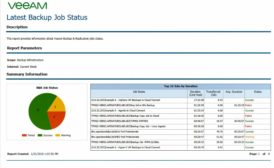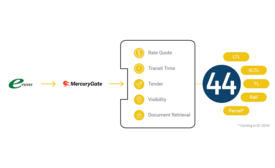Supply Chain & Logistics
Study: Shippers to move more freight in 2018
The survey consisted of a series of questions aimed at gauging the supply chain challenges that shippers experienced in 2017.
January 25, 2018
ATRI releases Top 100 list of truck bottlenecks
The analysis, based on truck GPS data from more than 800,000 heavy duty trucks, uses several customized software applications and analysis methods.
January 25, 2018
Romana Food Brands develops blockchain food traceability application
Romana's blockchain will include information on conditions at the production facilities, tracking of food items and volumes in the supply chain, to name a few features.
January 23, 2018
Maersk, IBM to form JV applying blockchain to improve global trade, digitize supply chains
The aim of the new company will be to offer a jointly developed global trade digitization platform built on open standards and designed for use by the entire global shipping ecosystem.
January 18, 2018
Study reveals retail imports experience 7% growth in 2017
Ports covered by Global Port Tracker handled 1.74 million 20-foot equivalent units in November.
January 11, 2018
4 steps to hiring, retaining skilled workforce
More and more employees are entering supply chain or manufacturing jobs lacking basic mechanical skills.
January 8, 2018
3 strategies for reducing turnover among forklift operators
Despite advances in automation, warehouses are still dependent on people, and those people are getting harder to find and retain.
January 8, 2018
Get our new eMagazine delivered to your inbox every month.
Stay in the know on the latest food and beverage manufacturing markets.
SUBSCRIBE TODAYCopyright ©2024. All Rights Reserved BNP Media.
Design, CMS, Hosting & Web Development :: ePublishing







